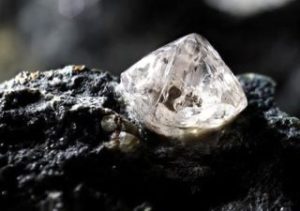PCVs rediscovered the ‘Blue Rock’
Larimar is a precious stone, unique in the world. What makes it one of the most mysterious gems in existence? Learn about the history and geology surrounding this treasure here.
Larimar: discover the mystery of the ‘Blue Rock’!
by Alfredo Graça
Meteored Portugal
Larimar is a rare gemstone, exclusive to the south-west of the Dominican Republic, a country on the island of Hispaniola, in the Caribbean. Geologically, it is a variety of pectolite, composed of an acid calcium-sodium silicate hydrate. It is formed through association with volcanic rocks (andesites and basalts) from the south of the island, originating from the Miocene, geological epoch (23 to 5 Million years ago). Although many pectoliths have been found in other parts of the globe, none have the colouration of larimar. The blue colour, distinct from other rocks, results from the replacement of copper with calcium.
The story behind the discovery of this gemstone is very peculiar. In 1916, according to historical data collected by the Dominican mining authorities, Father Miguel Domingo Fuertes Loren, then parish priest of Barahona, was the first to discover the ‘Blue Rock’. Later that same year, he applied to the government for a licence to exploit the mine, which was eventually denied because this type of pectolite was not known in the country.
Scientists believe it rains diamonds on Neptune and Uranus
In 1974, on a beach on the coast of Barahona, two Peace Corps Volunteers: Miguel Méndez and Norman Rilling (Dominican Republic 1970-74) rediscovered Larimar.
The locals, who thought the rock came from the sea, called it “Blue Rock.” However, its current name is due to Méndez, who, by combining the name of his daughter, named Larissa, and the word sea, due to the colours of the water in the Caribbean Sea where it was found, formed the word “LariMar.” The few rocks they found were remains washed up and deposited into the sea by the Bahoruco River.
After a search, the origin of the rocks was discovered and that place later became the Los Chupaderos mine. It was the same place that the priest had found in 1916. The mine is located about 10 kilometres from the city of Barahona, in the south-west of the Dominican Republic. It reinvigorated the entire local economy, providing work for many people in the area. Apart from the mine, there are also several local jewellers. From there, beautiful earrings, rings and bracelets can be obtained. It is also an original and unique souvenir from this country. The larimar was declared the national stone of the Dominican Republic in 2011 and is a symbol of identity and cultural heritage in the nation.

The stone sounds like a treasure. Where might one find them on line? Don Dirnberger RPCV Eastern Caribbean Antigue 77-79 and Honduras 99 Currently with AmeriCorps Denver
I don’t think the stone in the photo is larimar….looks more like a diamond. This is Larimar:
https://www.gemrockauctions.com/auctions/23295-cts-beautiful-larimar-stone-tbm-1840-trueblueminerals-1669707
Having spent much time in the DR, I agree, it is a beautiful gemstone and sings of the Caribbean.
You may be right, Matt, but that was the photo with the article.